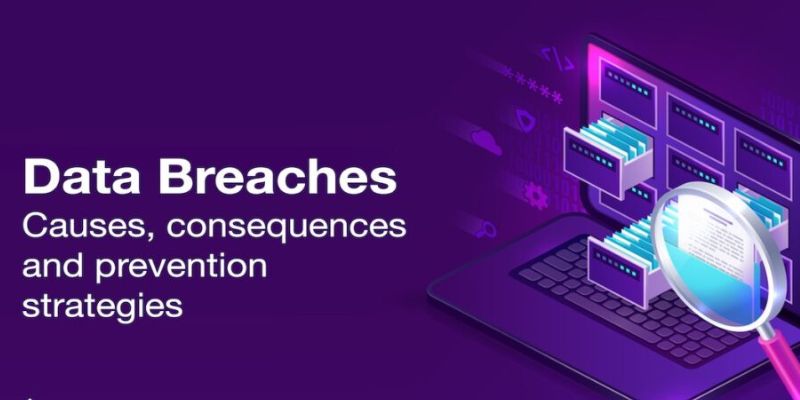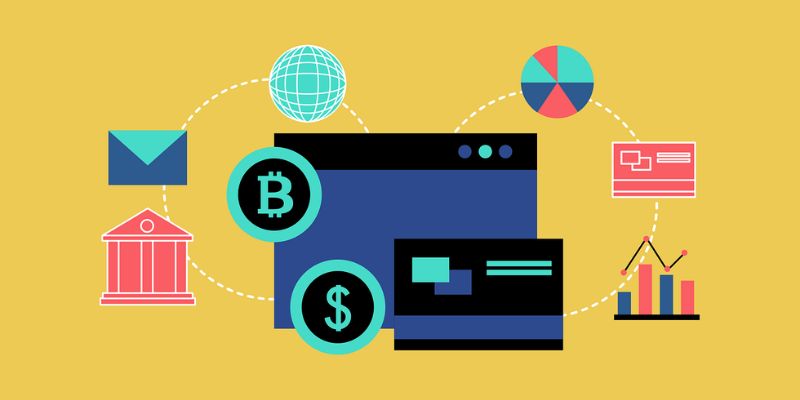In a world where digital payments are king, the impact of data breaches can topple empires. Imagine waking up to news of your customers’ private info strewn across the digital wilderness—a hacker’s delight. That’s the real risk we face every day. As a devoted guardian of online transactions, I’ve seen the chaos a single breach can unleash. Businesses bleed money; customers lose faith. If you think your digital wallet or payment gateway is a fortress, think again. Here, I’ll guide you through the treacherous landscape of cybersecurity, from the stark costs of compromised data to the battle-tested strategies that shield your digital assets. Buckle up; it’s time to navigate this cybersecurity minefield.
Understanding the Stakes: The Dire Cost of Data Breaches in Digital Payments
Exploring the Financial and Reputational Impact on Businesses and Consumers
Data breaches hit hard. They can cost millions and smash trust. For a business, a breach means lost money and a bad name. For customers, it’s fear and harm. Imagine your personal info stolen. It’s scary, right?
So, when hackers strike, they snatch more than just data. They grab our sense of safety. People worry their money might vanish. They think twice before using e-payments again. Shops may lose clients for good.
Now, what does a breach really cost a business? Beyond dollars, think trust. It’s not easy to win back. Gaining trust takes time, losing it happens fast. And the next big question – how do we keep data safe?
Navigating the Complexities of Payment Card Industry Compliance
Next, let’s dive into rules for safe card use. These rules are big deals for shops taking cards. They’re called PCI DSS standards. If shops follow these, your card data stays safe. But it’s not simple.
These rules change as threats change. And threats are like viruses; always shifting. So, complying is tough. It’s like a race where the finish line moves. But, shops must keep up. If they don’t, they face big fines.
It’s key to understand these rules make sense. They’re here for safety. To block theft. To stop fraud. They tell shops how to protect your data.
Every time you swipe, tap, or click to buy, you’re trusting the shop. You believe your info is safe. PCI DSS works to make sure it is. But when rules get broken, data gets taken.
And what happens next? Shops must act fast, fix the leak, help customers, and get better. They work to stop fraud and keep info safe. Remember, getting back trust is tough. So, prevention is best. And that’s what PCI DSS aims for. It’s all for safe shopping and peace of mind.

Fortifying the Frontlines: Strategies to Shield Digital Wallets and Payment Gateways
Implementing Encryption and Tokenization for Payment Safety
Imagine buying online with no worries about thieves stealing your card info. That’s what encryption does. It scrambles your data, so only you and the seller can read it. Tokenization makes this even better. It replaces your card details with unique symbols. Even if hackers get these symbols, they can’t do anything with them. Both methods help keep your money safe when you shop or pay bills online.
Encryption turns your private info into a secret code. Think of it as turning a note into a puzzle only certain people can solve. This keeps your card safe when you buy stuff on your phone or computer. Tokenization is like giving a secret handshake instead of your password. It’s safer because the handshake changes every time. So, even if someone sees it, they can’t use it again. Together, these two keep your money and card info safe from bad guys.
Enhancing Fraud Detection Systems to Combat Cybercrime in E-commerce
Now let’s talk about how we catch crooks who try to steal online. Fraud detection is like a super-smart guard that watches over your e-shopping. This guard uses patterns and tricks to spot thieves who try to snatch your cash. It’s always learning and getting better at catching bad guys before they can harm you.
These systems are like detectives. They look for clues that something fishy is going on with your card. If they spot a thief trying to use your card info in a way that doesn’t make sense, they jump into action. They might block the card or let the real owner know something’s up. This keeps your money safe and stops thieves in their tracks.
By using smart tools and checks, stores can make sure only the right person uses your card. They check if the purchase matches your usual habits or if it’s out of place. This way, they can tell if someone else is trying to use your card. It’s like having a robot friend that’s always looking out for you. These systems help make sure your e-shopping is fun and safe, without any scary surprises. They make the online shopping world safer for everyone, helping us stay one step ahead of the crooks.

Preventive Measures: Educating Stakeholders and Upgrading Technology
Embracing EMV Chip and Biometric Verification to Secure Transactions
The keys to safe shopping and banking lie in the tiny chip on your card and the unique features of you – your fingerprints or face. Known as EMV chips and biometric verification, they are like super-heroes for your bank account. Let me paint a picture; a tiny chip is more than just plastic. Each time you use it, it creates a unique code. This code is for one-time use. So, even if bad guys get it, they can’t use it again – it’s like a magic spell that keeps your data safe.
Not just that, add your special traits, like the ridges on your fingertips or the look of your eyes. Biometric verification means using what’s yours to protect your money. Your body becomes the key that locks your financial doors tight. It’s simple – you are the only you. Therefore, your money is safe when you are the only one who can say ‘yes’ to a transaction.
Understanding and Aligning with E-Payment Compliance Standards
Now, let’s make sure everyone plays by the rules. Banks, shops, and even you have rules to follow. These rules are to keep thieves at bay. They are called e-payment compliance standards – think of them as a guidebook for keeping money talk safe in the online world.
To start, there’s this thing called PCI DSS – a bunch of rules that anyone taking cards needs to follow. It means no shortcuts when handling card data. These rules make sure that everyone from the big mall to the local candy store keeps your card info under wraps.
And then, there’s the big word – GDPR. It’s like a privacy promise in Europe. It tells companies how to treat personal info and what they must do if they mess up. It’s like a privacy fence for your info, keeping nosey folks out.
But it’s not just about rules. Each person needs to understand what makes a payment secure. We talk a lot about things like encryption – that’s turning data into a secret code – and tokenization, which is like giving your card info a disguise. Both keep your real card numbers hidden away like a treasure.
Then, when you’re online, looking to buy that cool toy or a gift for mom, remember the locks on your data – the chips and scans that mean you’re the only one spending your cash.
In the end, staying safe is a team effort. It’s a mix of high-tech chips and people knowing the play. It’s you, using your unique keys and following the rules of safe pay. Keeping villains away from your treasures is not just a job for caped heroes. It’s on you, me, and every person who wants to click ‘buy’ without an ounce of fear. By teaching and updating what we use, we keep the digital world a safe space for our dollars and dreams.

Post-Breach Action Plan: Mitigating Damage and Restoring Consumer Trust
Immediate Responses to Unauthorized Transactions and Financial Data Exposure
When a breach hits, the clock starts ticking. Fast action is key. First, stop the breach. Block it out. Then, find out what was taken. Was it names, card numbers, or codes? Tell the people and the banks involved, fast. This helps keep trust.
Offer help to those hit by the breach. Credit checks, fraud checks – give these services for free. They need to know they are not alone in this. It helps them feel safe again.
Show you are on top of it. Share how you found out and what you are doing about it. People trust clear, open words more.
Next, check your entire digital payment platform. Hunt for weak spots. Seal them up. Test your security, again and again, to be sure.
Long-Term Initiatives for Strengthening Digital Payment Security and Customer Confidence
After the dust settles, it’s time to work for a safer tomorrow. Build stronger walls around your digital wallets. This means new tools, new tricks for safety.
Start with encryption. It locks up the data tight. Only the right key can open it. This keeps the bad folks out.
Then, bring in more checks on who’s using your system. Use things that thieves can’t easily fake – like a thumbprint.
Teach everyone involved. Show them what a scam message looks like. Tell them not to click on links that look odd. Keeping them in the know helps keep everyone safe.
Always watch for trouble. Use systems that spot something wrong before it gets worse. If a card is used in odd ways or places, check it out right away.
And don’t forget the law. Stick to the rules for safety in e-payments. These rules are there for good reasons. They help you keep a clean, safe shop.
Remember, building trust takes more than a day. Every safe transaction helps prove you are doing things right. Keep your word on security, and they will keep coming back.
In this article, we’ve seen the high cost of data breaches in digital payments. Businesses and shoppers both lose out when safety fails. Keeping payment info safe is key, and it’s not just about passing checks set by the payment card industry.
We looked at smart ways to protect online wallets and payment systems. Using code tricks and smart tools can stop thieves in their tracks. Fighting cybercrime in online shopping is crucial.
It’s also about teaching everyone involved and using the latest tech. Chips in cards and touch ID help keep each buy safe. It’s vital to stick to e-payment rules too.
If a breach happens, act fast to fix it and win back trust. You need a good plan for both right away and for the long haul. This helps make digital payments safer and people can feel good using them.
I believe that being careful and ready at all stages is the best plan. Following these steps can make digital buying safe and trustworthy. Let’s keep pushing for stronger security in our digital world.
Q&A :
How do data breaches affect consumer confidence in digital payment platforms?
Data breaches can significantly impact consumer trust in digital payment systems. When sensitive information is exposed, users may become hesitant to continue using these platforms for fear of financial loss or identity theft. This drop in confidence can lead to reduced transaction volumes and a potential shift towards more traditional, seemingly secure payment methods.
What are the potential financial repercussions for businesses due to data breaches in digital payments?
Businesses can face substantial financial consequences when a data breach occurs in their digital payment infrastructure. These may include the immediate costs of addressing the breach, legal fees, fines for non-compliance with data protection regulations, and compensation for affected customers. Additionally, the long-term financial impact includes loss of customer trust and loyalty, which can translate into decreased sales and revenue.
How do data breaches impact the regulatory landscape of digital payments?
The occurrence of data breaches often leads to a tightening of regulatory standards and increased scrutiny over digital payment systems. Regulators may impose stricter data protection guidelines, enforce more robust cybersecurity measures, and require more transparent reporting from companies. Compliance with these enhanced regulations can lead to increased operational costs for businesses in the digital payments industry.
What can consumers do to protect themselves from the impacts of a data breach on digital payments?
Consumers can take several steps to mitigate the risks associated with data breaches in digital payments, such as using strong, unique passwords for their accounts, enabling two-factor authentication, regularly monitoring their transaction histories for any unauthorized activity, and being cautious of phishing attempts. Additionally, they should stay informed about the latest security updates and best practices for digital payment technologies.
What technological advancements are being made to prevent data breaches in digital payments?
In response to the growing threat of data breaches, the digital payments industry is continuously advancing its security measures. Technologies like encryption, tokenization, and fraud detection algorithms are being enhanced to protect financial data. Blockchain technology is also being explored for its potential to offer a more secure and transparent framework for online transactions, which could revolutionize the security of digital payments.

